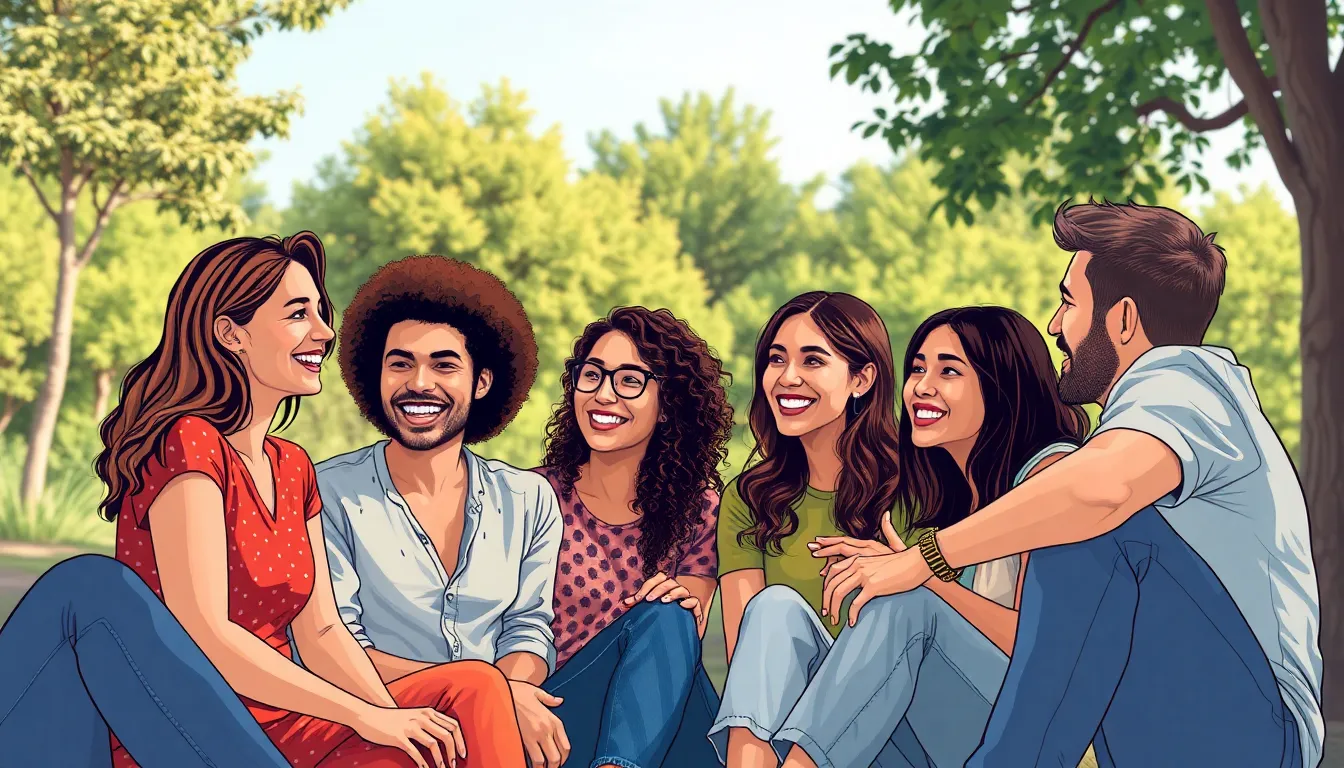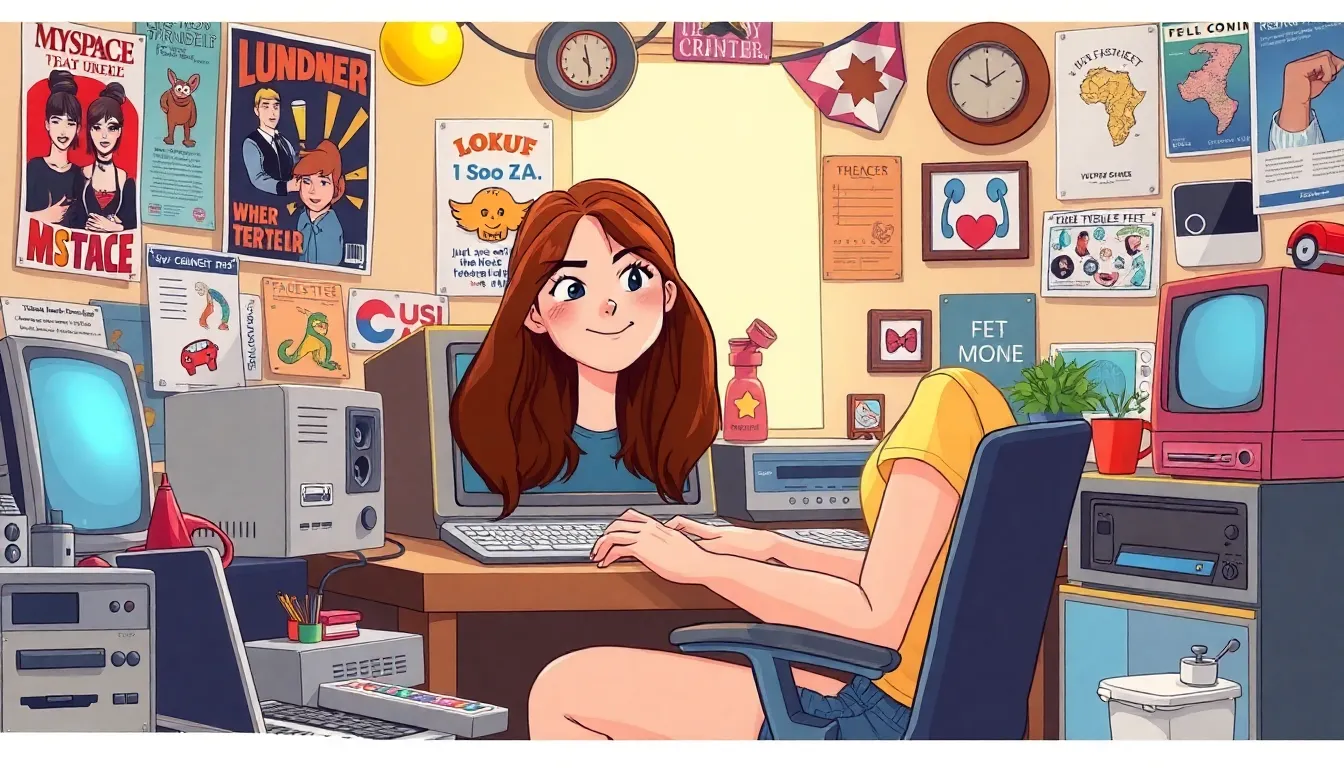Table of Contents
ToggleRemember the days when social media meant more than just scrolling through endless selfies and cat videos? Back when platforms like MySpace and Friendster ruled the digital landscape, users crafted their online personas with as much care as a barista perfects a latte. Old social media wasn’t just a way to connect; it was a quirky adventure filled with glittery backgrounds and custom playlists that screamed “Look at me!”
As nostalgia sweeps over the internet, it’s time to take a trip down memory lane. Exploring the rise and fall of these early platforms reveals not only the evolution of communication but also the hilariously awkward moments that defined a generation. Join the journey and rediscover how old social media shaped today’s online interactions, often in ways that make us chuckle and cringe at the same time.
The Rise of Old Social Media
Old social media platforms marked the beginning of online interaction, creating spaces for users to explore self-expression and connection. MySpace, Friendster, and others revolutionized how people engaged digitally.
Key Platforms of the Era
MySpace emerged as a frontrunner in social networking, attracting millions with customization options available for profiles. Friendster, an earlier pioneer, fostered connections based on real-life friendships, promoting authentic interactions online. Bebo incorporated multimedia features, making profile customization fun and engaging. Another significant player, Hi5, focused on social gaming, encouraging users to connect over shared gaming experiences. These platforms laid the groundwork for today’s social media landscape.
User Engagement Trends
User engagement thrived through personalized profiles and interactive features such as commenting and messaging. Many users found joy in expressing individuality through creative themes and layouts. Social circles expanded as people sought connections with both friends and new acquaintances. Sharing music playlists and favorite movies became common, building community around shared interests. These practices encouraged active participation, fostering a sense of belonging that shaped social media’s evolution.
The Role of Old Social Media in Communication

Old social media platforms played a crucial role in shaping communication. They facilitated connections that transcended geographical barriers.
Connecting People Across Distances
Friendster and MySpace allowed users to reconnect with old friends and discover new relationships. Individuals shared experiences and stayed in touch, even with vast distances between them. Bebo and Hi5 emphasized this further, promoting personal interactions through multimedia content. Connection featured prominently, as these platforms offered users the tools to forge authentic relationships. The messaging systems enabled real-time conversations, enhancing emotional connections and social bonds. Distance became less of an obstacle, transforming how people maintained friendships.
Influencing Public Discourse
User-generated content on platforms like MySpace invited diverse opinions and discussions. Trends emerged as groups formed around shared interests and hobbies. Earlier social networks provided a space for dialogue on various topics, fostering community engagement. Platforms influenced public discourse by amplifying voices that might otherwise remain unheard. Personal experiences shared by users often sparked larger conversations, encouraging political awareness and activism. As trends indicated, the ability to raise awareness about social issues strengthened community bonds. Online discussions shaped collective opinions, significantly impacting societal norms and cultural movements.
The Evolution of Social Media
The transition from early social media platforms to modern ones marks a significant shift in digital interaction. MySpace and Friendster laid the groundwork for user engagement, yet they couldn’t adapt quickly enough to emerging technologies. Facebook’s launch in 2004 introduced a streamlined interface and additional features, leading to widespread adoption. Twitter followed, emphasizing brevity and real-time updates, transforming how users communicated. As mobile technology advanced, platforms like Instagram and Snapchat prioritized visual content and ephemeral sharing, appealing to a younger audience. User preferences shifted towards more dynamic interactions, prompting a reimagining of social media experiences.
Lasting insights from early platforms shaped today’s digital landscape. User-generated content from MySpace and Friendster initiated a culture of self-expression, encouraging modern platforms to embrace personalization. The storytelling aspect prevalent in these early networks continues to influence social media strategies today. Multimedia features from Bebo paved the way for video-centric applications like TikTok, enhancing engagement through creativity. Additionally, real-time communication capabilities established on Friendster and MySpace set the standard for messaging in current platforms. By fostering connections and promoting community engagement, these old platforms laid a foundation that informs social media dynamics today.
Challenges Faced by Old Social Media
Old social media faced a range of significant challenges that contributed to their decline and paved the way for new platforms.
Privacy Concerns
Privacy issues became prominent for users of early social media platforms. Data breaches often exposed personal information, leading to widespread distrust. Many users felt insecure as platforms lacked robust privacy settings. Regulations around user data protection were virtually nonexistent, creating a turbulent environment. Platforms struggled to establish transparent policies, further alienating their user base. Mismanagement of personal data eroded credibility, prompting users to migrate to newer, more secure platforms. Efforts to enhance privacy features often came too late to regain lost trust.
The Decline of User Engagement
User engagement sharply declined over time for platforms like MySpace and Friendster. Changes in user preferences shifted toward mobile content and instant communication. Complicated interfaces drove users away, as simpler platforms emerged with streamlined experiences. Novel features from competitors captivated audiences, further fragmenting the user base. Platforms realized too late that continuous innovation was essential for retaining attention. As engagement dwindled, advertising revenue also dropped, leading to financial instability. Focus on user experience ultimately shifted toward preserving existing users rather than attracting new ones, resulting in a vicious cycle of decline.
The journey through old social media platforms reveals a rich tapestry of creativity and connection. These early networks not only shaped personal identities but also transformed communication in ways that resonate today. As nostalgia for MySpace and Friendster lingers, it’s clear their influence remains embedded in modern social interactions.
While challenges led to their decline, the lessons learned from these platforms continue to inform how users engage with social media now. The emphasis on privacy and user experience has become paramount as new platforms rise to prominence. Ultimately, the evolution of social media reflects a continuous quest for connection and self-expression, reminding everyone of the importance of adapting to changing landscapes.




